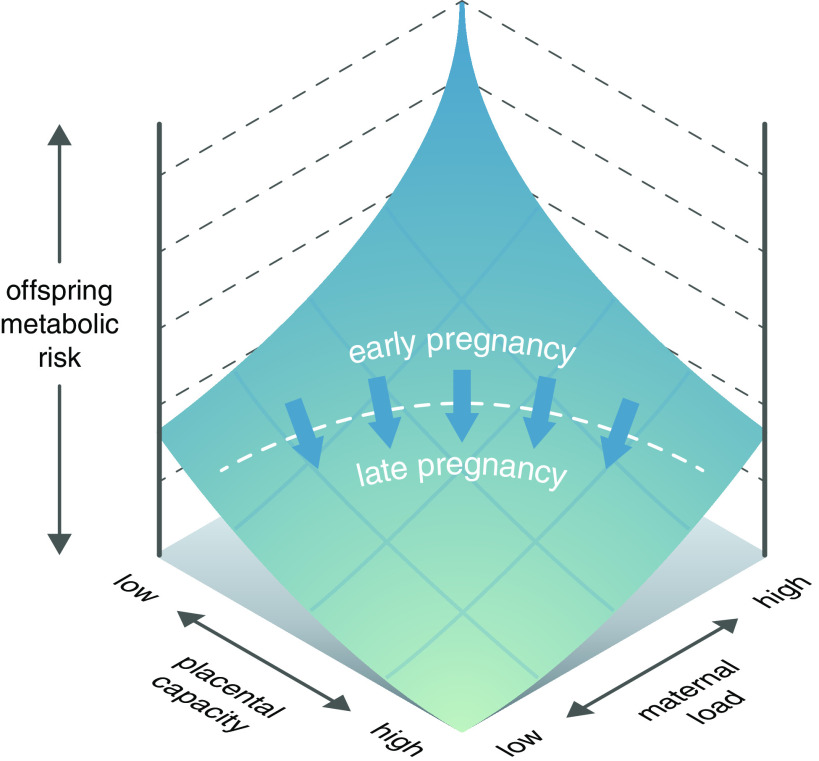Figure 2.
Placental homeostatic capacity/efficiency model. During pregnancy, the placenta has a homeostatic capacity that will maintain fetoplacental homeostasis and determine the efficiency, with which the placenta protects the fetus from adverse consequences of a disturbed intrauterine environment. Up to a certain level of maternal metabolic load, the placenta can respond to signals such as insulin and orchestrate adaptive homeostatic responses that preserve an optimal metabolic milieu for fetal development. We hypothesize that this capacity is negligible during the early weeks in pregnancy and fully developed at the end. However, above the limiting threshold, such placenta capacity is exhausted and adverse fetal effects ensue. This threshold may differ according to both maternal and fetal traits (53).

